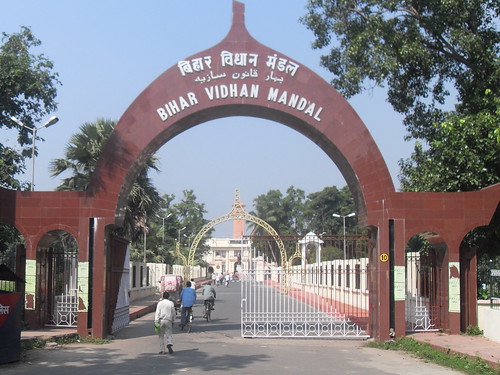By Imran Khan, IANS,
Patna: While the first phase had development as the main election plank, Bihar’s second phase of assembly poll Sunday will see caste arithmetic and the minority card in play as 45 constituencies in the flood-prone belts go to vote.
The stakes are high for Chief Minister Nitish Kumar as well as the combine of his arch rivals, Rashtriya Janata Dal (RJD) boss Lalu Prasad and Lok Janshakti Party (LJP) chief Ram Vilas Paswan.
A total of 99,49,873 voters are eligible to vote in the second phase that will decide the fate of 623 candidates. The areas going to the polls are in the flood-prone and poverty-stricken Tirhut-Mithilanchal belt. Most of the 9,952 polling booths are in rural areas.

TCN Photo
Polls will be held in six districts – Muzaffarpur, Darbhanga, Samastipur, Motihari, Sheohar and Sitamarhi.
In the first phase Thursday, polls were held for 47 of Bihar’s 243 assembly seats.
The first phase in the Kosi-Seemanchal belt was a litmus test for the ruling National Democratic Alliance (NDA) — comprising Nitish Kumar’s Janata Dal-United (JD-U) and the Bharatiya Janata Party (BJP). But in the second phase, the RJD-LJP combine will have an edge as their social support base is stronger in the Tirhut-Mithilanchal belt.
The Congress is keen to make its presence felt in the wake of the euphoria created by party general secretary Rahul Gandhi’s visit.
The RJD has 19 legislators in the region and the LJP has 3, while the JD-U and BJP together have 23 legislators.
This is the strongest base of the RJD-LJP and they will try to retain it. “It was the strongest belt of Lalu Prasad till the late 1990s when he used to champion the cause of social justice with aggressive support of Other Backward Caste-Extreme Backward Caste-Muslim. Even in the 2005 assembly polls, the vote of the RJD-LJP was higher than the NDA, despite a dip in RJD’s votes by 10 percent,” a political watcher said.
The region has a sizeable number of Lalu Prasad’s castemen, Yadav, and Paswan’s castemen, Paswan, and they are likely to favour the RJD-LJP. In the last assembly polls, the NDA was benefited due to a split between the RJD and LJP.
“The OBC-EBC-Dalit votes along with Muslims will be a decisive caste arithmetic for the RJD-LJP again,” RJD leader Shakil Ahmad Khan said. But the JD-U is looking for EBC-OBC, Mahadalit and Muslim support to get an upper hand. Its hopes, however, lie with the strong presence of the upper caste, particularly Bhumihar, Brahmin and Rajput, who are regarded as supporters of Nitish Kumar’s development plank and are a counter to the Lalu-Paswan social justice politics.
“The JD-U hope lies with votes of the EBCs, upper caste and Muslims to counter the caste factor in the Yadav and Paswan stronghold,” Satyanarain Madan, a political analyst said. The Congress, which is fighting all seats on its own, is hopeful of regaining its traditional support base of Muslims, Dalits and upper castes. But in the Tirhut-Mithilanchal belt, the upper caste votes could be split between the Congress and the BJP.
The run-up to the election saw spirited campaigning by top leaders – BJP’s Nitin Gadkari and L.K. Advani, who addressed the first three election meetings for this round, followed by Congress general secretary Rahul Gandhi as well as Lalu Prasad and Nitish Kumar.
All of them blamed their rivals for the backwardness of Bihar and promised development if voted to power.
The heavyweights in this phase include state JD-U president Vijay Kumar Choudhary, RJD state president Abdul Bari Siddiqui as well as minister Ramnath Thakur, son of legendary Karpoori Thakur.
There are several candidates with criminal record in the fray.
The next election rounds will be held Oct 28, Nov 1, 9 and 20. Votes will be counted Nov 24.

